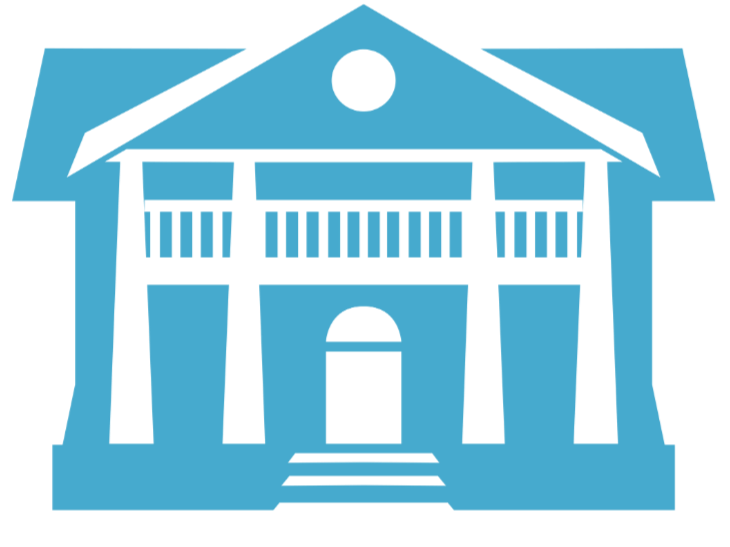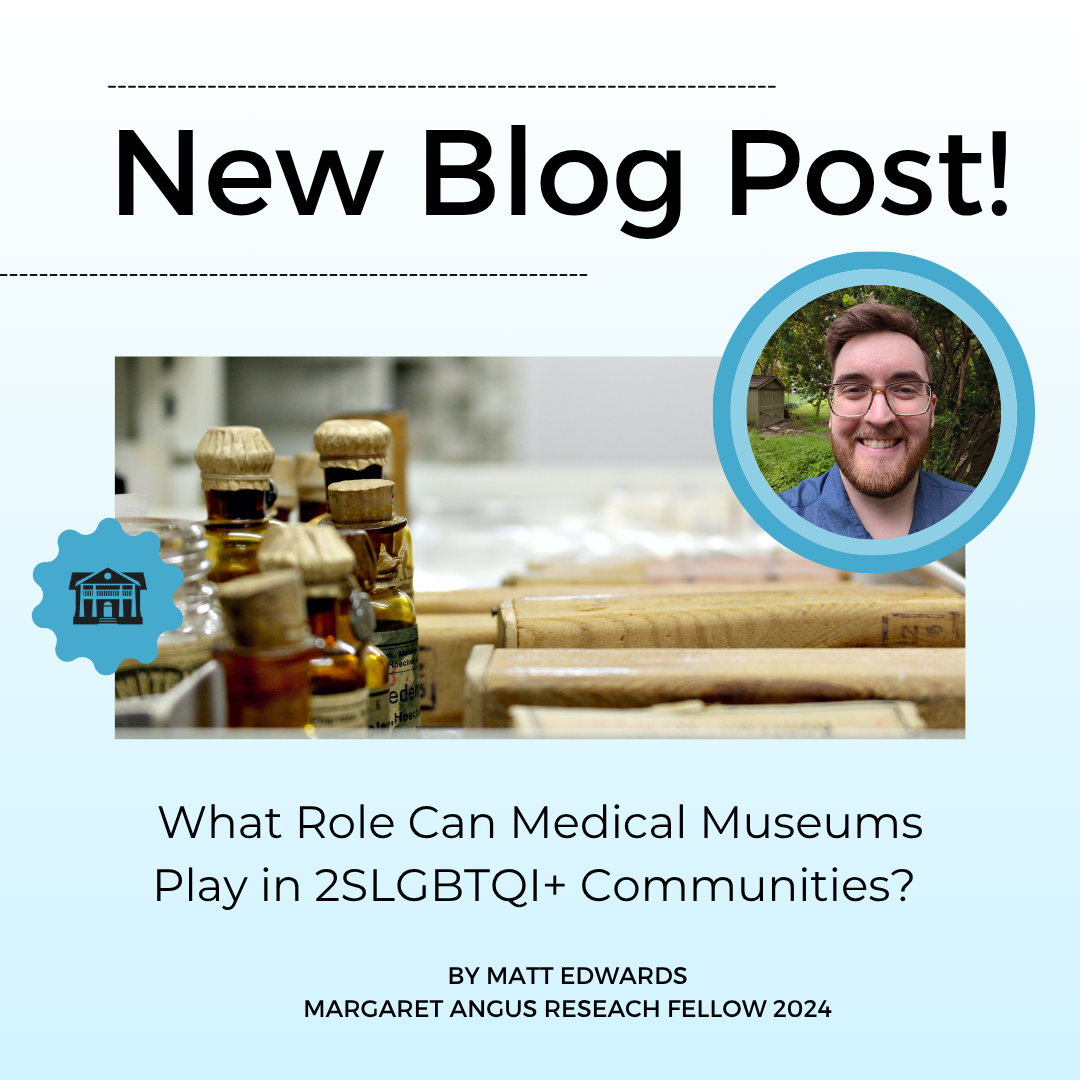What Role Can Medical Museums Play in 2SLGBTQI+ Communities?
As Dr. Ashley Waddington noted in her interview with us here, gender diversity and its expression cannot be limited to the medical practices we’ve come to group under gender affirming health care today. Historically, transgender, Two-Spirit, intersex and gender non-conforming or genderqueer people have existed independently of medical services like surgery or hormonal therapies. Transgender people’s history, as a result, cannot be equated or limited to a history of these medical techniques. Put another way, trans history is not synonymous with medical history –and understanding the countless ways that transgender identities were (and are) expressed outside of medical options offers us valuable lessons on community, solidarity and perspective on the importance of self-knowledge across time.
Medical history –and museums— nevertheless stand to make an important contribution to sharing these lessons. As curators, program interpreters, doctors and historians who work on it will tell you, medical history is particularly good at getting us to think critically about what we know, how we know it and how new ideas shape our interactions with the wider world. Despite its tendency to over-emphasize individual doctors or discoveries, the history of medicine is also a powerfully accessible history of knowledge and how it circulates.
By tracing how evidence and experiment take on lives outside the lab, science and health care museums can contextualize how ideas travel over time, distance and between people. They can also encourage their audiences to think about this circulation, and particularly how technologies or discoveries become meaningful at a given moment in history. Discussions on science, medicine and technology can lead audiences to consider how social norms have shaped our definitions of health. This history can also encourage the public to deal critically with the times and places where expert authorities have spoken over the most vulnerable people among our communities.
Topics like gender affirming health care also position museums to highlight how those people “talked back” to normative health care, questioned biased interpretations and pushed for recognition of their lived experiences. Medical museums have the opportunity to publicize these contributions and encourage a more nuanced understanding of how science and medicine have been shaped by marginalized communities, not just professionals or institutions. Teaching about the ways that gender-diverse people have used, retooled and rejected medical definitions or services stands to help more people understand and appreciate the diversity of gender, the complexity of sex and the ways that people have shared knowledge about this throughout time.
The history of gender affirming health care is a particularly good example of how no community is a monolith, and that a one-size-fits-all approach to health care fails to recognize that diversity. Though never limited to its confines, gender diverse people have often had to sit in conversation with medical knowledge about sex and behaviour. These communities, with varying levels of recognition or support from medical professionals themselves, have contributed to that knowledge immeasurably by resisting normative definitions of sex and gender. Looking at gender diversity specifically helps us understand the development of the facilitative model –helping people pursue what works for them instead of prescribing or enforcing some “correct set of steps that everybody needs to follow,” a problematic approach that has affected gender affirming care in Canada’s past.
I started thinking about medical history’s relationship to 2SLGBTQI+ communities last summer, during my Margaret Angus Fellowship here at the Museum of Health Care. I was given an incredible opportunity to work with the Museum’s collections pertaining to hormonal therapies and spent a too-short few months looking into the material and textual records pertaining to gender affirming care’s development in Kingston. We’ve covered the results of that research in a series of blog posts and a manuscript that delve into how sex and gender diversity were modelled in the curriculum at Queen’s Med in the 1940s-1960s. This research delves into how hormonal therapies were originally modelled as ways to “normalize” intersex bodies in the 1940s and considers the ramifications of this instruction in subsequent decades.
Reflecting on it now, almost a year later, I want to continue showing people everything these historical encounters between medicine and 2SLGBTQI+ communities can teach us. Medical historians, I think, have a responsibility to share these kinds of stories and highlight gender diverse peoples’ perspective on medical practice. To answer the question in our title, the role that medical museums can play in 2SLGBTQI+ communities is to show how we have resisted, contributed to and redefined health care practices to better support the diversity of human life.
I appreciate that the Museum of Health Care has also recognized this responsibility and works to both cooperate with Kingston’s 2SLGBTQI+ community, and support research into topics that touch on its history.
I have mentioned throughout here that Two-Spirit, transgender and gender-diverse/genderqueer people often sit in conversation with medical definitions and knowledge – I would love to include more of these encounters here, but I cannot summarize these authors’ insights in better words than their own. If you’re interested in understanding how gender diverse people have thought about their historical relationship with medicine, I heartily encourage you to read some of the texts listed below.
A Selection of Gender Diverse Voices on Medicine & Medical History:
Digital Exhibits & Web Sources:
The Toronto ArQuives. Digital Exhibit. “Gendertrash from Hell: Queer Connection and Exposure,” Mirha-Soleill Ross Fonds (1990-2008). https://arquives.ca/gendertrash-from-hell-queer-connection-and-exposure/
Williams, Cristan. “#DiscoSexology Part 1: Dr. Zucker, CAMH & Conversion Therapy.” Transadvocate.com. https://www.transadvocate.com/part-i-the-rise-and-fall-of-discosexology-dr-zucker-camh-conversion-therapy_n_19556.htm
Williams, Élise Hendrick. “Science and Ideology: The Blanchard-Bailey-Lawrence Model of Transsexuality.” Transadvocate.com. https://www.transadvocate.com/science-and-ideology-the-blanchard-bailey-lawrence-model-of-transsexuality_n_162.htm
Books:
Florence, Ashley. Banning Transgender Conversion Practices: A Legal and Policy Analysis. Vancouver: UBC Press, 2022.
Gill-Peterson, Jules. Histories of the Transgender Child. Minneapolis: University of Minnesota Press, 2018.
Haritaworn, Jin. Queer Lovers and Hateful Others: Regenerating Violent Times and Places. London: Pluto Press, 2015.
Marvellous Grounds: Queer of Colour Formations in Toronto. Edited by Syrus Marcus Ware, Ghaida Moussa and Jin Haritaworn. Toronto: Between the Lines, 2018.
Meadow, Tey. Trans Kids: Being Gendered in the Twenty-First Century. Oakland: University of California Press, 2018.
Tosh, Jem. Body and Consent in Psychology, Psychiatry and Medicine: A Therapeutic Rape Culture. New York: Routledge, 2020.
Tosh, Jem. Psychology and Gender Dysphoria: Feminist and Transgender Perspectives. New York: Routledge, 2016.
Withers, A.J. “Disability, Divisions, Definition, and Disablism: When Resiting Psychiatry is Oppressive.” 114-128. In Psychiatry Disrupted: Theorizing Resistance and Crafting the (R)evolution. Edited by Bonnie Burstow, Brenda A. LeFrançois, Shaindl Diamond. Montreal: McGill-Queen’s Press, 2014.
Articles:
Honkasalo, Julian. “When Boys Will Not Be Boys: American Eugenics and the Formation of Gender Non-Conformity as Psychopathology.” International Journal of Masculinity Studies (2016): 270-286.
Serano, Julia. “Autogynephilia: A scientific review, feminist analysis, and alternative ‘embodiment fantasies’ model.” Sociological Review 68, no. 4 (2020): 763-778.
Tosh, Jem. “’Zuck Off!’ A Commentary on the Protest against Ken Zucker and His ‘Treatment’ of Childhood Gender Identity Disorder.” Psychology of Women 13, no. 1 (2011): 10-16.
Travers, Ann. Jennifer Marchbank. Nadine Boulary. Sharalyn Jordan. Kathleen Reed. “Talking Back: Trans Youth and Resilience in Action.” Journal of LGBT Youth 19, no. 1 (2022): 1-13.
About the Author:
Matt Edwards (MARF 2024)
Matt Edwards (he/they) is a PhD Candidate in Tri-University History program. He holds a Master’s in History from Carleton University, Ottawa, and has previously worked within the NGO and heritage sectors as a coordinator, program interpreter and educator. Matthew’s doctoral research documents the history of conversion therapy in the Canadian healthcare system, looking specifically at its presence within medical school curricula and clinical training in central Canada during the 20th century. Their research interests include the history of mental healthcare, gender, sexuality and education.

